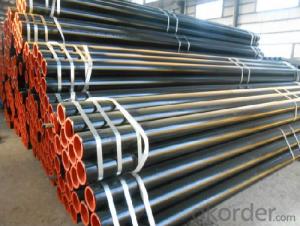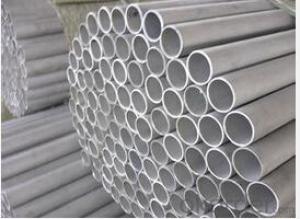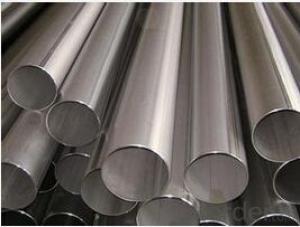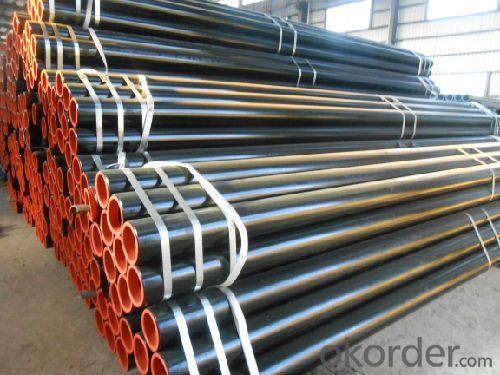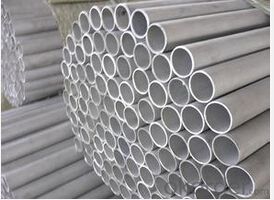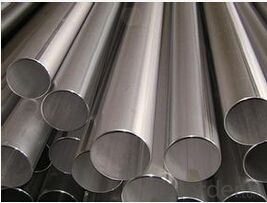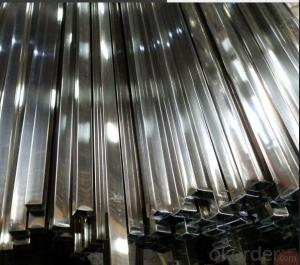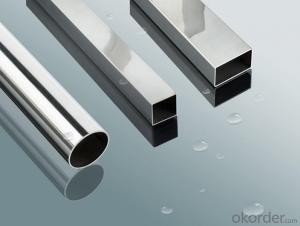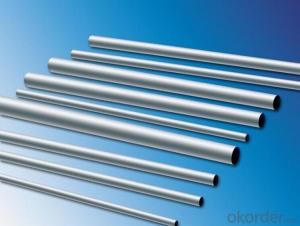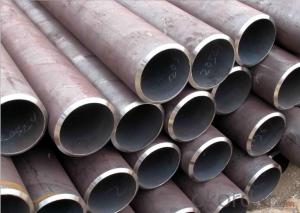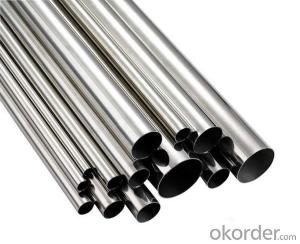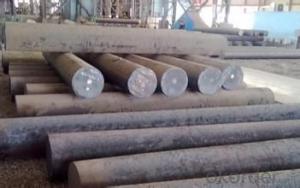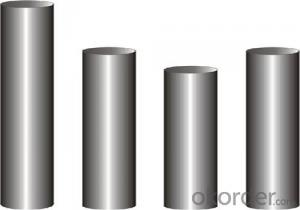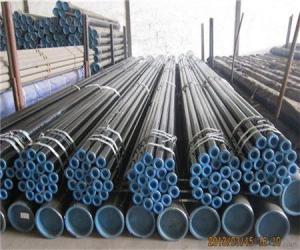ASTM Standard Stainless Steel Seamless Pipe manufacturer
- Loading Port:
- China main port
- Payment Terms:
- TT or LC
- Min Order Qty:
- 25 m.t.
- Supply Capability:
- 7000 m.t./month
OKorder Service Pledge
OKorder Financial Service
You Might Also Like
1、Structure of ASTM Standard Stainless Steel Seamless Pipe:
ASTM Standard Stainless Steel Seamless Pipe is formed by drawing a solid billet over a piercing rod to create the hollow shell. As the manufacturing process does not include any welding, ASTM Standard Stainless Steel Seamless Pipe are perceived to be stronger and more reliable. Historically ASTM Standard Stainless Steel Seamless Pipe was regarded as withstanding pressure better than other types, and was often more easily available than welded pipe.
2、Main Features of ASTM Standard Stainless Steel Seamless Pipe:
• High manufacturing accuracy
• High strength
• Small inertia resistance
• Strong heat dissipation ability
• Good visual effect
• Reasonable price
3、ASTM Standard Stainless Steel Seamless Pipe Specification:
Standard | GB, DIN, ASTM ASTM A106-2006, ASTM A53-2007 |
Grade | 10#-45#, 16Mn 10#, 20#, 45#, 16Mn |
Thickness | 8 - 33 mm |
Section Shape | Round |
Outer Diameter | 133 - 219 mm |
Place of Origin | Shandong, China (Mainland) |
Secondary Or Not | Non-secondary |
Application | Hydraulic Pipe |
Technique | Cold Drawn |
Certification | API |
Surface Treatment | factory state or painted black |
Special Pipe | API Pipe |
Alloy Or Not | Non-alloy |
Length | 5-12M |
Outer Diameter | 21.3-610mm |
Grade | 20#, 45#, Q345, API J55, API K55, API L80, API N80, API P110, A53B |
Standard | ASME, ASTM |
1) Material:20#(ASTM A 106/A53 GRB.API5LGRB,GB),45#,16Mn,10#.
2) Specification range:OD:21.3-610mm,WT:6-70mm,length:6-12m or according to the requirement of clients.
3) Excutive standards:GB,ASME API5L.ASTM A 106/A53,Despite of the above standards,we can also supply seamless steel pipe with standard of DIN,JIS,and so on,and also develop new products according to the requirements of our clients!
4) Surface:black lacquered,varnish coating or galvanized.
5) Ends:Beveled or square cut,plastic capped,painted.
6) Packing:bundles wrapped with strong steel strip,seaworthy packing.
4、Packaging & Delivery
Packaging Details: | seaworthy package,bundles wrapped with strong steel strip |
Delivery Detail: | 15-30days after received 30%TT |
5、FAQ of ASTM Standard Stainless Steel Seamless Pipe:
①How is the quality of your products?
Our products are manufactured strictly according to national and internaional standard, and we take a test
on every pipe before delivered out. If you want see our quality certifications and all kinds of testing report, please just ask us for it.
Guaranteed: If products’ quality don’t accord to discription as we give or the promise before you place order, we promise 100% refund.
②How about price?
Yes, we are factory and be able to give you lowest price below market one, and we have a policy that “ for saving time and absolutely honest business attitude, we quote as lowest as possible for any customer, and discount can be given according to quantity”,if you like bargain and factory price is not low enough as you think, just don’t waste your time.Please trust the quotation we would give you, it is professional one.
③Why should you chose us?
Chose happens because of quality, then price, We can give you both.Additionally, we can also offer professional products inquiry, products knowledge train(for agents), smooth goods delivery, exellent customer solution proposals.Our service formula: good quality+good price+good service=customer’s trust
SGS test is available, customer inspection before shipping is welcome, third party inspection is no problem.
6、Seamless Pipe ASTM A106/53 Images:
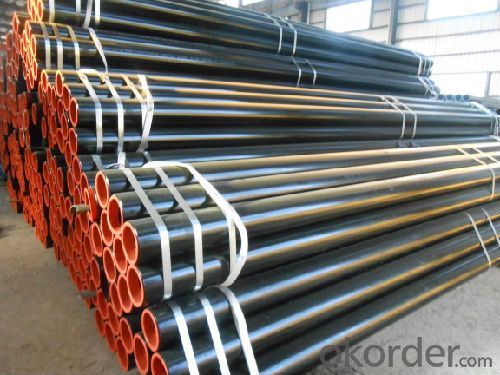
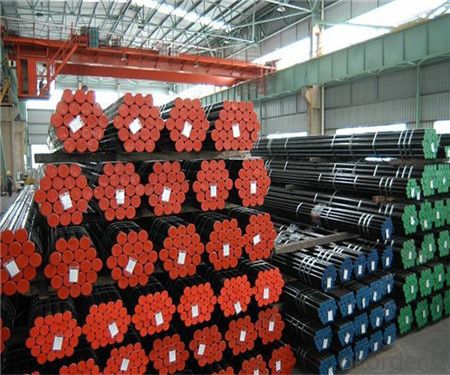
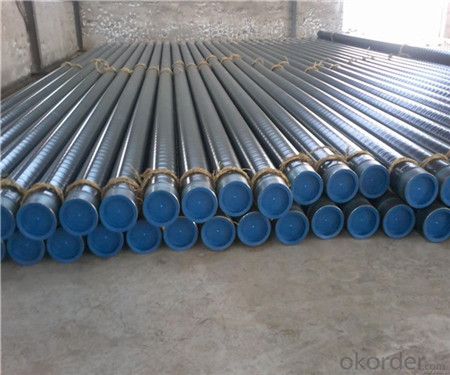
- Q: How do you prevent clogging in stainless steel pipes?
- There are several steps that can be taken to prevent clogging in stainless steel pipes: 1. Regular maintenance is crucial. It is important to regularly inspect and clean the pipes to remove any build-up or debris that could cause blockages. 2. Proper waste disposal is essential. Only dispose of appropriate materials in the pipes and avoid flushing items like paper towels, sanitary products, or grease down the drain. These can accumulate and lead to clogs. 3. Install drain filters or strainers. These can catch large particles or debris that may cause clogs. Clean or replace them as needed. 4. Avoid corrosive materials. Certain chemicals or substances can corrode stainless steel pipes, leading to damage and potential clogs. Follow manufacturer guidelines and avoid using corrosive materials near the pipes. 5. Ensure proper water flow. Run water regularly, especially in pipes that are not frequently used, to maintain adequate water flow and prevent clogs. 6. Consider using water softeners. If your water supply is hard and contains minerals that can build up, installing a water softener can reduce mineral deposits and prevent clogs. 7. Seek professional assistance if needed. If you experience persistent clogging or are unsure about prevention methods, consult with a professional plumber. They can assess the situation, provide guidance, and effectively address any existing clogs. By following these preventive measures, you can minimize the risk of clogs in stainless steel pipes and maintain the efficient operation of your plumbing system.
- Q: How do you calculate the expansion of stainless steel pipes?
- To calculate the expansion of stainless steel pipes, you need to consider the coefficient of thermal expansion of the material. This coefficient represents the change in length per unit length for every degree Celsius of temperature change. By multiplying the coefficient by the initial length of the pipe and the temperature difference, you can determine the expansion of the stainless steel pipe.
- Q: What does "stainless steel pipe" DN mean?
- DN is nominal diameter, nominal diameter (or nominal diameter), that is, all kinds of pipe and pipe accessories of universal caliber. The pipes of the same nominal diameter can be connected with each other and are interchangeable. It is not the outer diameter or inner diameter of the pipe in actual sense, although its value is close to or equal to the diameter of the pipe;
- Q: What is the difference between duplex and super duplex stainless steel pipes?
- The main difference between duplex and super duplex stainless steel pipes lies in their chemical composition and mechanical properties. Duplex stainless steel pipes have a mixed microstructure of austenite and ferrite, offering a good balance of corrosion resistance and strength. On the other hand, super duplex stainless steel pipes have a higher content of chromium, molybdenum, and nitrogen, providing exceptional resistance to corrosion, especially in harsh environments. Super duplex stainless steel pipes also possess superior mechanical properties, such as increased tensile strength and improved resistance to stress corrosion cracking.
- Q: Can stainless steel pipes be recycled?
- Yes, stainless steel pipes can be recycled. Stainless steel is a highly recyclable material due to its durability and corrosion resistance. When stainless steel pipes reach the end of their useful life or are no longer needed, they can be collected, processed, and melted down to create new stainless steel products. Recycling stainless steel pipes not only helps conserve natural resources but also reduces energy consumption and emissions associated with mining and manufacturing new materials.
- Q: Can stainless steel pipes be used for oil refinery applications?
- Yes, stainless steel pipes can be used for oil refinery applications. Stainless steel is widely used in the oil and gas industry due to its excellent corrosion resistance properties, high strength, and durability. Oil refineries deal with harsh and corrosive environments, including high temperatures, pressure, and exposure to various chemicals. Stainless steel pipes can withstand these conditions and offer long-lasting performance. Stainless steel pipes are resistant to corrosion caused by acidic and alkaline substances, which are commonly found in oil refinery operations. They also have good resistance to pitting and crevice corrosion, making them suitable for handling crude oil, petroleum products, and other corrosive media. Furthermore, stainless steel pipes can handle high temperatures without losing their strength and integrity. This is important in oil refineries where processes involve heating and cooling operations. In addition to corrosion resistance and high-temperature capabilities, stainless steel pipes also provide excellent mechanical properties. They are strong, durable, and have good weldability, making them suitable for the demanding conditions of oil refinery applications. Overall, stainless steel pipes are a reliable choice for oil refinery applications due to their corrosion resistance, high-temperature capabilities, and mechanical properties. They ensure the safe and efficient transportation of oil and petroleum products, contributing to the smooth operations of oil refineries.
- Q: Can stainless steel pipes be used in the food and beverage industry?
- Yes, stainless steel pipes can be used in the food and beverage industry. Stainless steel is a popular choice for piping in this industry due to its excellent corrosion resistance, hygienic properties, and durability. Stainless steel pipes do not react with food or beverages, ensuring the integrity and safety of the products being transported. Additionally, stainless steel pipes are easy to clean and maintain, which is crucial for maintaining high levels of sanitation in food and beverage processing. Overall, stainless steel pipes are widely accepted and used in the food and beverage industry for their reliability and suitability for handling a wide range of products.
- Q: Can stainless steel pipes be used for pharmaceutical cleanrooms?
- Yes, stainless steel pipes can be used for pharmaceutical cleanrooms. Stainless steel is a preferred material in pharmaceutical cleanrooms due to its excellent corrosion resistance, durability, and ease of cleaning. It meets the stringent requirements for clean and sterile environments and can withstand the harsh cleaning agents used in pharmaceutical facilities.
- Q: Can stainless steel pipes be used in the mining industry?
- Yes, stainless steel pipes can be used in the mining industry. Stainless steel is a highly durable and corrosion-resistant material that is well-suited for the harsh and demanding conditions often found in mining operations. The mining industry involves the extraction and processing of various minerals and ores, which often require the use of corrosive chemicals and high-pressure fluids. Stainless steel pipes are able to withstand these harsh conditions and provide reliable and long-lasting performance. One of the main advantages of stainless steel pipes in the mining industry is their resistance to corrosion. The mining environment often contains corrosive substances such as saltwater, acids, and various chemicals used in the extraction and processing of minerals. Stainless steel pipes are resistant to these corrosive elements, ensuring that they do not degrade or weaken over time. This makes them ideal for transporting fluids and gases in mining operations. In addition to their corrosion resistance, stainless steel pipes also offer excellent strength and durability. They can withstand high pressures and temperatures, making them suitable for handling the demanding conditions of the mining industry. Stainless steel pipes are also known for their low maintenance requirements, which is crucial in remote mining areas where accessibility and maintenance can be challenging. Furthermore, stainless steel pipes are versatile and can be used in various applications within the mining industry. They can be used for transporting water, slurry, and other fluids, as well as for ventilation systems, structural components, and even for lining mine shafts. Their versatility and durability make them a cost-effective choice for mining companies, as they can be used in a wide range of applications and have a long service life. Overall, stainless steel pipes are a reliable and durable choice for the mining industry. Their resistance to corrosion, high strength, and versatility make them well-suited for the challenging conditions found in mining operations. By using stainless steel pipes, mining companies can ensure the efficient and safe transportation of fluids and gases, contributing to the success and productivity of their operations.
- Q: Can stainless steel pipes be pressure tested?
- Indeed, it is possible to subject stainless steel pipes to pressure testing. The purpose of pressure testing is to expose the pipes to elevated pressure levels, surpassing those encountered in regular operations, in order to verify their robustness and reliability. Stainless steel is renowned for its resilience and capacity to endure high-pressure circumstances, thereby rendering it fitting for pressure testing purposes. The procedure entails filling the pipes with either a liquid or gas and progressively escalating the pressure to the intended level, all the while vigilantly inspecting for any signs of leakage or malfunctions. To guarantee precise outcomes and avert potential dangers, it is imperative to adhere to proper protocols and safety precautions throughout the pressure testing process.
Send your message to us
ASTM Standard Stainless Steel Seamless Pipe manufacturer
- Loading Port:
- China main port
- Payment Terms:
- TT or LC
- Min Order Qty:
- 25 m.t.
- Supply Capability:
- 7000 m.t./month
OKorder Service Pledge
OKorder Financial Service
Similar products
Hot products
Hot Searches
Related keywords
